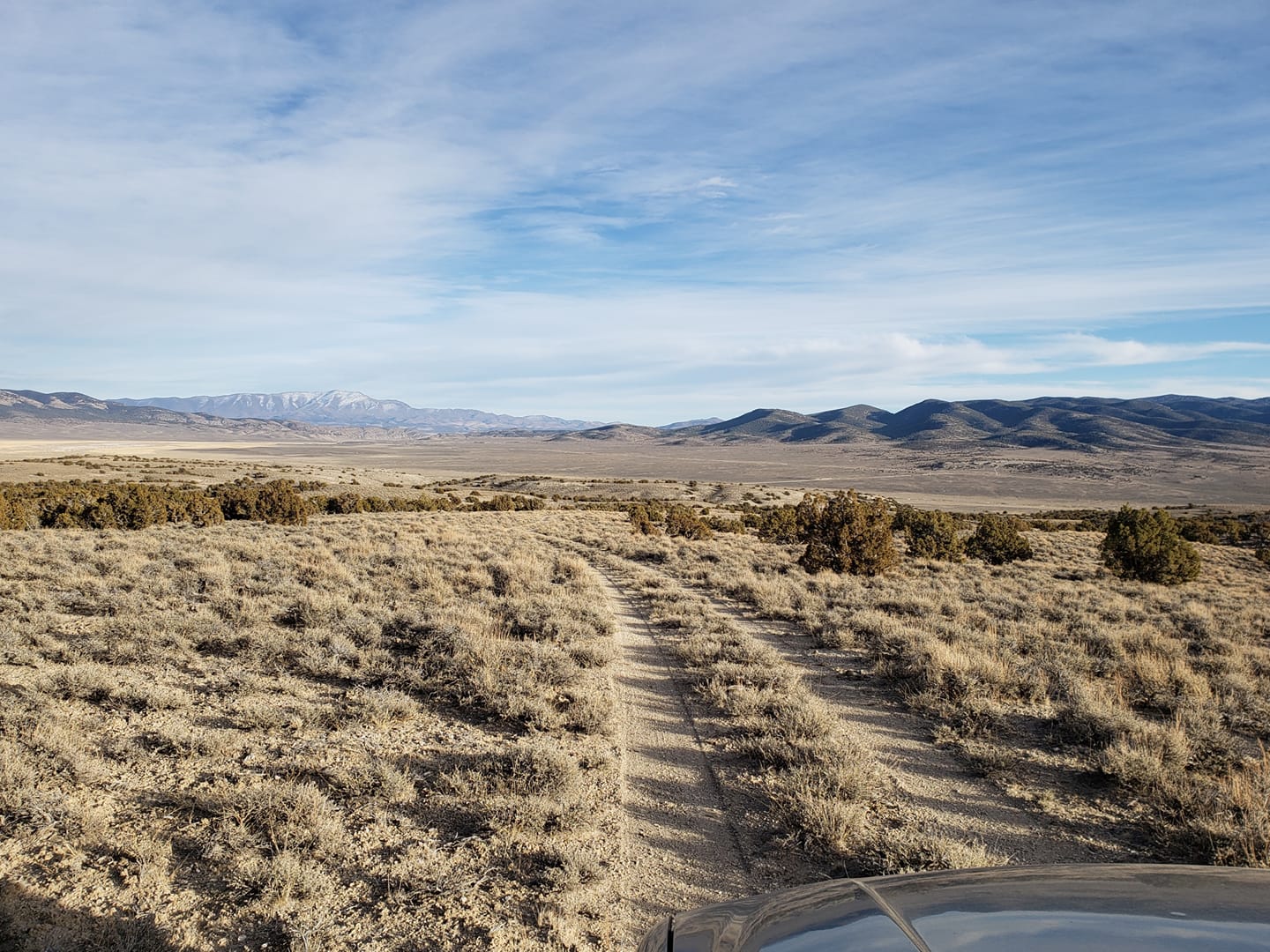***
"I cannot overstate the potential harm the coronavirus can do to the world economy." (Eureka Miner, January 31, 2020)
"WARNING: Too quiet on the copper front? Red metal at currency-like volatility!" @Eurekaminer March 4, 2020 [Comex copper fell into Bear Country March 13, 2020]
***
Follow the ole Colonel on twitter @Eurekaminer
Next Week Target Gold Price: $1,750 per ounce, Target Silver Price: $18.42 per ounce
My latest Kitco News commentary: Gundlach copper-gold indicator: low volatility in unexpected places (4/28/2020, Kitco News) [summary of recent commentaries given at the bottom of the blog]
An easy-to-understand overview on gold (32 slides, read explanation below each slide): History of gold and which countries have the most
Morning Miners!
A week full of market moving news. US/China tensions are heating back up after a cooling down earlier this week. A White House Rose Garden press conference in a few minutes will provide an update on the situation. Unemployment claims in the last 10 weeks swelled to 40.7 million although the weekly increase was down from the previous weeks. There are riots in the streets of Minneapolis and disappointing consumer spending data this morning...all of this has boosted precious metal prices.
Investor demand for gold remains high. I believe it is up and away for $1,800+ ; taking out the 2011 $1,900+ all-time record is in the cards too for 2020. Look for my Elko Daily Free Press column on this subject in the near future. It will also be included in the upcoming Mining Quarterly.
Comex August gold is trading at $1,749.8 per ounce (10:05 am Eureka Time). It pulled back a bit from an earlier morning high of $1,752.6
Silver continues to be on a tear. Additionally, the technical numbers for silver are beginning to shine brightly [see Silver Watch below].
Comex July Silver currently trading at $18.52 per ounce (10:52 am Eureka Time) just below the day's high of $18.54.
Copper is showing some giddy-up this morning but there's a rough trail ahead (below).
Comex July copper is presently $2.4230 per pound (10:05 am Eureka Time). Copper is up 1% this week [see Weekly Summaries below, recorded earlier this morning].
Here's how I explained my gold and silver outlook to the Kitco News Weekly Gold Survey this morning:
Push-Pull, Exuberance-Reality
Gold finds itself continuing in a push-pull with an exuberant domestic stock market. With historic monetary accommodation inflating asset prices, economic re-opening and hopes for a covid-19 vaccine by the end of the year, the S&P has rallied to within 10% of its all-time February high. On the worrying side, simmering U.S./China tensions on Hong Kong and now Taiwan, a weekly bump-up in unemployment to 40-plus million jobless citizens, riots in Minneapolis, weak consumer spending and a whiff of future inflation invigorate gold's hunger for new highs.
This witches' brew of concerns bubbles against a bullish backdrop of a weakening U.S. dollar (the U.S. dollar Index has fallen to late-March levels) and persistently negative 10-year real rates.*
Copper and the benchmark S&P 500 continue a high and persistent positive correlation (>+0.6, 1-month & 3-month) suggesting both have been riding together on optimism and extraordinary Central bank accommodations and not fundamentals. Look for a sea change in the coming weeks: risk-off, gold up, copper down, equities in a trading range.
I believe it likely the yellow metal solidifies $1,750 territory next week on a path to $1,800 per ounce. As the gold-to-silver ratio continues to fall and silver's beta relative to gold increases, silver should find comfort at $18.42 per ounce.
These are the strange times of coronavirus.
* U.S. real rate -.50%, 10-year Inflation expectation 1.18%; 10-year bonds: German Bund -0.45%, France -0.08% and Japan -0.01%
Since it continues to dominate markets, a covid-19 summary is updated below. The ole Colonel has also included the overview of the 1918-1919 Influenza impact on Eureka County from previous posts (bottom of blog).
COVID-19 Update
There is a dandy website created for Eureka County to track and report on the covid-19 pandemic:
Here are the grim covid-19 statistics reported this morning:
U.S.A. 1,731,035 covid-19 cases; 102,201deaths
Nevada 8,350 covid-19 cases; 410 deaths
If you want to track the charts and projections that Dr. Anthony Fauci and Dr. Deborah Birx reference, check out this site (included in the Eureka website also):
Click on the "United States of America" tab to find individual states. The "deaths-per-day" chart projections give the best time duration estimate because death is a lagging indicator. The models have been recently updated through August 4th given early openings in some states:
This is only a model prediction - it can change and adapt as we learn more each day.
Remember each region has its own curve and numbers can vary widely state-to-state, county-to-county. Social distancing is currently our only weapon to change the curve's shape.
Stay safe and distant my friends.
Copper, Oil & China Updates
July Comex copper is up 1% for the week but off its highs, presently trading at $2.4230 per pound. This column in Mining.com just more complicated the copper story is becoming:
Pandemic to worsen copper glut in coming months (5/27/2020)
The Saudi-Russia oil price war in combination with covid-19 has had a devastating impact on the oil markets. This morning Nymex WTI is trading up at $33.07 per barrel. The front month NYMEX futures contract plumbed a historic low of -$37.63 per barrel on Monday, 4/20/2020.
China, which still represents copper's highest demand, is on the mend. Here is my China Indicator updated through this morning (see above 2/18/2020 Kitco column). A low number is good. A bottom of 0.3012 occurred after the signing of the Phase I deal seemed certain (Friday, 1/10/2020). This AM the indicator sits at 0.8600 below the coronavirus peak of 1.8399 set February 11th and moving away from the 5-year average (0.78). The covid-19 pandemic is stabilizing in China, but let's keep an eye for any moves higher given recent U.S./China tensions (click on chart for larger size).
China 2-rho Divergence Indicator
I've been actively tweeting market news/events during the week so please follow me at @Eurekaminer. I usually tweet Sunday night on the Monday Shanghai Futures Exchange (SHFE) for a heads up on copper & gold prices in the Year of the Rat.
To ponder: In numerology the year 2020 reduces to the number 4 - a dreaded number in Chinese culture. And yes, it is the Year of the Rat...a double-whammy for sure.
Remember, you can register with the Centers for Disease Control and Prevention (CDC) for updates by e-mail. Look at the situation summary tab on their website for updated U.S. infections and deaths.
Weekly Summary
Here is a weekly summary chart of gold and my 16 favorite market variables. They are grouped in categories "Commodities", "Interest Rates", "Indexes" and "Currencies" of 4 variables each. Over time, each variable has played some part in the gold story. It is prudent to monitor all 16 to understand the key price drivers that are currently active for the yellow metal. Importantly, this is not a unique collection of variables but one that works well for the ole Colonel
Because The Eureka Miner is a morning report, Friday AM prices are compared with the closing prices of the previous week (click on charts for larger size):
This weekly chart of comparative value tracks the value of gold relative to key currencies, commodities and indexes :
Silver Watch
Comex silver is above $18 per ounce (see Weekly Summaries above).
Please check this out if you get the silver bug:
How to Invest in Silver (Debbie Carlson, U.S. News & World Report, August 1, 2019)
How to smartly buy gold and silver:
How to Mine Physical Precious Metals for an IRA (Debbie Carlson, Barrons, Sept. 8, 2019)
The gold-to-silver ratio (GSR) set a new high Wednesday, 3/18, of 123.9 ounce per ounce solidly above July 11 high of 91.3 - a trend down from this top is bullish for silver if the Lustrous One continues its rally.
At 95.01 silver is historically very cheap relative to gold!
The 10-year average GSR is much lower at 68.6 ounce per ounce.
The 3-month beta with gold is bullishly above unity at 1.48 (i.e. on average, the daily % rise or fall of silver price is beta times the % change in gold price). You prefer a high beta (i.e. greater than 1.00) when gold rallies higher (click on image for larger size).
Gold-to-Silver Ratio
Historical note:
In the past, when gold and silver were legal tender (see gold overview link below headline photo), it was important to set a value relationship between them. In 1792, the U.S. fixed its price at 15:1. This means that 1 troy ounce of gold was worth 15 troy ounces of silver. Over the years, as this ratio has changed, precious metal investors have used it as a signal of when to buy.
Stay tuned.
Inflation Watch
Inflation expectations made a high of 2.18% April 23, 2018. They have tracked steadily down from there with a dive to the 0.5%-level before reversing higher, yesterday's number is 1.18%. Expectations have been rising at a faster pace than 10-year U.S. Treasury yields resulting in negative real rates again (see Weekly Summary Charts) - a bullish signal for a non-interest earning asset like gold.
10-year Inflation Expectations
Many believe, including the ole Colonel, that gold price is more sensitive to inflation expectations than other measure of inflation. My January Kitco News commentary explains the importance of tracking "real rates" which are a function of inflation expectations:
Gold Versus Real Rates: $1,380+ by May Day 2019 (Kitco News, 1/2/2019)
Old Glory
Eureka, Nevada
Chart to Monitor
Here's a chart to monitor for 2020 (Click on the image for a larger size):
An important gold ratio is gold-to-S&P500 or AUSP. The ratio bottomed in early-December of 2015 and reversed to a bullish trend, peaking February 11, 2016 (0.6849). It bottomed December 20, 2016 (0.4973) trended higher but then bearishly reversed into a downward channel bottoming again October 1, 2018 (0.4063). Currently this AM the AUSP is at 0.5767 below the high of 0.7029 set March 23, 2020. Importantly, the ratio has aggressively left the downward trending channel with an uptrend trend of higher-lows starting with the October 2018 low. This week the ratio continues to maintain lots and lots of daylight above that trend (red dotted line) - bullish gold!
Six Things to Watch in 2020
The ole Colonel's beer bet (won on an intraday basis Tuesday, January 7th!). I have since revised it [parenthesis]:
Gold will break [on a closing basis] $1,600 per ounce before the 4th of July 2020
We'll keep the bet alive by looking at closing instead of intraday prices - what a sport! [won on a closing basis February 18th]
My top six things to watch for 2020:
- Copper prices - I'd like to see copper prices push us above $6,500 per tonne ($2.95 per pound). A fall below the $6,000-level ($2.72) would be a bad sign - for example, U.S./China trade Phase I in trouble or escalating geo-political unrest. [Update: Covid-19 has pushed copper below $6,000 per tonne].
- Chinese yuan - strengthening below 7 USDCNY is a good sign that their economy and trade are on an improving track (Weekly Summary). Sustained weakening above the 7-level is a red flag. [Chinese yuan is above 7 USDCNY again]
- U.S. dollar - will it remain strong or begin a period of decline? Foreign demand for Treasury debt has kept the dollar strong but rising U.S. deficits and countries trying to move away from dollar dependence (e.g., China, Russia) are countervailing forces not to be ignored. The U.S. Dollar Index (DXY) made its high September 30 this year and has been in a downtrend of lower-lows since (99.38 September high). This reports tracks the Invesco DB US Dollar Index Bullish Fund (UUP) (27.01 September high, see Weekly Summary below for latest price). Finally, overseas interest in Treasurys has been fueled by negative interest rates abroad. This report monitors the German 10-year bund (Weekly Summary) as a benchmark for foreign Treasury demand. [Update: Covid-19 has caused liquidations as market participants rush to the U.S. dollar for safety. This has surged the U.S. Dollar Index above 100]
- Interest Rates - there is an almost uncanny relationship between the yield on the benchmark U.S. 10-year Treasury and the copper-to-gold ratio (CGR, Weekly Summary). I've written about this extensively since 2017 ( see The Colonel's Latest Kitco News Commentaries below). Bottom line, a rising CGR signals higher interest rates for 2020. [Update: Covid-19 appears to have reversed the trend higher, 10-year Treasury is near record lows].
- Real rates - The 10-year inflation adjusted Treasury yield, or real rate, is the difference between the nominal yield and inflation expectations (aka 10-year "break-even" rate). Since gold is a non-interest earning assets it performs best when real rates are near zero or negative. This report tracks real rates (Weekly Summary) and inflation expectations (Inflation Watch). Since gold is often considered an inflation hedge it is prudent to track both. In 2020, inflation may pick up (gold bullish) but if interest rates rise faster, an increasing real rate dampens interest in in the yellow metal (gold bearish). [Real rates have been negative since March 23, 2020]
- Gold-to-S&P 500 ratio (AUSP) - Gold's relationship with equities is key to monitor. Gold lost value to the S&P 500 from Donald Trump's election until October of 2018. Since then it has regained value in a trend of higher-lows (see Chart to Watch). We entered 2020 with that trend higher challenged. Falling below trend would be a very bearish sign for gold. [Update: Covid-19 has put the AUSP solidly above trend].
Predictions aside, 2020 will no doubt be an exciting year in the markets. Get ready for a roller-coaster ride, pardner. I remain bullish gold!
The Colonel's Latest Kitco News Commentaries
Please checkout my latest Kitco News columns on the stunning relationship of copper and gold prices with interest rates:
Gundlach copper-gold indicator: low volatility in unexpected places (4/28/2020, Kitco News)
Copper, gold & the coronavirus (2/18/2020, Kitco News)
Leading indicator for U.S./China trade - copper, gold & yuan (1/13/2020, Kitco News)
Is Jeffrey Gundlach right about copper, gold & interest rates? (12/23/2020, Kitco News)
Gundlach indicator: stable copper-gold means low yield volatility (11/11/2019, Kitco News)
Gundlach Indicator: treasury yield and copper-gold ratio plummet (9/03/2019, Kitco News)
Robust Revival of Gundlach's 10-yr Treasury Relation with the Copper-Gold Ratio (6/17/2019, Kitco News)
1918 Influenza in Eureka County (Update)
I've been searching old newspapers (newspapers.com) to see how Eureka County was affected by the 1918-1919 Spanish Influenza Pandemic. With 500 million cases worldwide and an estimated death toll exceeding the military fatalities of WWI and WWII, Eureka County also suffered fatalities from this deadly virus. Influenza was first detected in the U.S.A. in January 1918 but didn't make it to Northern Nevada until October of that year.
Typical newspaper column of the day reporting
1918 Influenza in Northern Nevada
There were cases reported in surrounding counties of Lander, White Pine and Elko. Some nearby cities/towns cited with influenza were Reno, Carson City, Winnemucca, Silver City, Elko, Pioche and Tonopah. So far, I haven't found any newpaper columns specifically citing Eureka County but with a little digging (using findagrave.com) discovered two confirmed deaths, one in Palisade and another in the ghost town of Mineral (Mineral Hills Cemetery, headline photo). There are four possible influenza deaths in Eureka cemeteries and one in Beowawe. That's seven total for the County, still
digging [UPDATE below puts the death count at 38 confirmed which includes 1919 and a re-occurrence in 1922].
Charles Safford Walker
(photo: findagrave.com)
Mining and Army training camps were often where trouble began. The main line east-west railroad was suspected to be a path of transmission. I've been informed by Roger Colton that his great uncle,Charles Safford Walker (1882-1918, 36 years old), died of complications after the flu. Mr. Walker was then the owner of the Palisade Ranch. The death certificate listed the cause of death as “bronchial pneumonia following influenza,” October 31, 1918. The town of Palisade is located on the mainline in the north County suggesting that trains may have indeed been an enabler for virus spread in rural communities.
Roy Plummer Gravesite
(photo: Robert Frenchu)
A second confirmed death is Roy Plummer (Nov. 21,1896 to Dec. 23, 1918, 22 years old) buried in the Mineral Hills Cemetery. Here is his death certificate:
Death Certificate for Roy Plummer
Here is a recent news column from the Carson City Nevada News:
Echoes of the past: Exploring the 1918 influenza epidemic in Nevada (Carson City Nevada News - Carson Now, April 19, 2020)
UPDATE April 18, 2020: After posting the above, Rhonda Shandler Gardner reached out to me and provided some excellent research she compiled on the very same subject. Rhonda worked from recorded death certificates to identify 19 influenza deaths in Eureka County in 1918, 10 in 1919 and 9 in 1922. This is a total of 38 confirmed and there are other "possibles" declared simply as pneumonia on the death certificate. The 1922 record indicates the re-occurrence of Spanish Influenza in Eureka County. The 1918 deaths include four I found (above) and eliminated some others.
Here is a link to her detailed and informative research:
WW1 AND THE INFLUENZA EPIDEMIC 1918-1919 (Rhonda Gardner)
Interestingly, a lot of these cases occurred in sheep camps and ranches in Antelope Valley and Bean Flat. Here is a death certificate for Alfred Pedlar of Bean Flat from Rhonda's research (35 years old, died November 23, 1918):
Death Certificate for Alfred Pedlar
Cheers,



































.png)



.jpg)


.jpg)